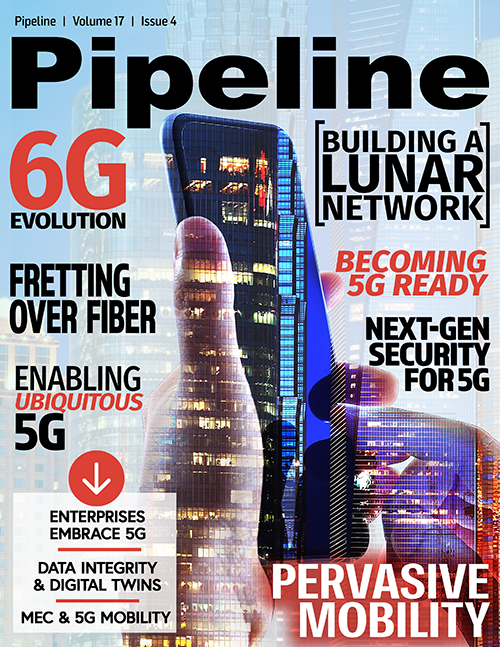The Ultimate Edge: Building a Lunar Network
By: Robert Brumley

Humankind is returning to the Moon and the world has lunar fever. Multiple governments have made this strong statement a national aspirational goal. The simple idea of humankind permanently returning to the Moon, and someday Mars, has also stimulated a seemingly unique personal desire within the individual to be involved, somehow, some way, in humankind’s next great adventure. This individual feeling of common purpose spans borders, fueled by social media and technical blogs. And, for the first time it is pressuring national space agencies’ planned programs and milestones to either lead this effort or allow private firms to do so as partners or pathfinders. Consequently, this global desire to migrate off-planet appears to be open to all humankind—including space agencies, contractors, start-up firms, and entrepreneurs—seeking to participate. It asks participants to draw on their resources, skills, and aspirations to contribute to establishing a sustainable, permanent presence on the Moon.
Past constraints
The private-sector interest in space, as a general business sector, has multiple barriers to entry: regulatory, bureaucratic, capital, and competitive pressure. As the dominant purchaser of space hardware and services, space agencies have yet to fully embrace the private sector as an equal partner, much less an alternative supplier. For example, consider the effect of the Reagan Administration barring NASA from competing with the private sector in the provision of commercial launch services; it took NASA 34 years to embrace private space transportation as a cost-saving alternative to government managed launch vehicles, (for example, SpaceX). Humankind is not willing to wait another 34 years to commercialize the space hardware and service systems available today—and needed to establish a sustainable, permanent presence on the Moon tomorrow.
Partnerships for the future
Limited space agency partnerships are being formed today with commercial firms to build and manage lunar landers. NASA needs these landers to deploy payloads and sensors on the lunar surface as preliminary steps back to the Moon. These lunar landers need NASA science payloads to offset cost and business risks as well as to attract commercial customers. Lunar landers will be the forerunner to the larger missions, such as Artemis, and the return of humankind to the Moon. These landers are also, however, pathfinders of a different sort.
The commercial payloads the lunar landers carry—including sensors, robotics, communications, and rovers—are demonstration and test platforms of the new technologies needed for the future infrastructure on the Moon. They are also the validator or eliminator of commercial business ideas, like rover racing, streaming ad videos from the lunar surface, and other such content. Many later-stage payloads will seek information on lunar soil—regolith—as useful material for building materials, as well as applications particularly suited for robots. There are many venture components being concepted or planned, including launch vehicles, in-orbit space tugs, landers, and rovers; such logistics suppliers as water and power; habitations including short-duration modules and permanent expandable facilities below the lunar surface; and industrial infrastructure involving robotics, media, and tourism. Many of these are already booking on lander platforms. And, preeminent in importance among all these activities on, below, or orbiting the Moon is communications.
Moon communications
As it’s currently planned, the earliest communications infrastructure on the Moon will come from its surface via commercial lunar landers mentioned above (2021-2023) carrying onboard radio frequency (“RF”) capabilities. These landers’ communications



















